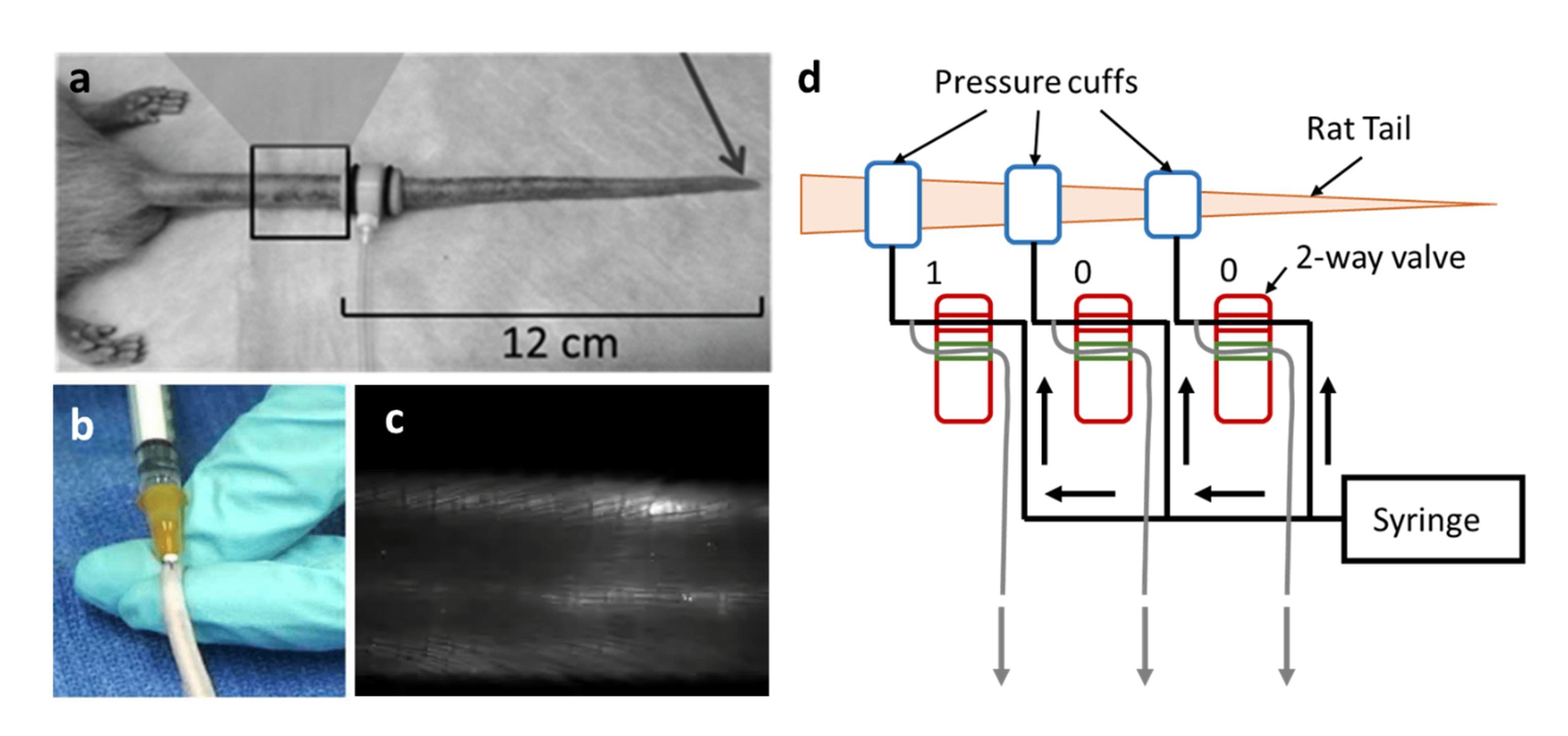Effect of dynamic mechanical forces on lymphatic contractility
The lymphatic system is a complex network of vessels and nodes consisting of intrinsically contractile discrete segments called lymphangions that are separated by valves. This intrinsic contractility of the lymphangions is modulated by the dynamic forces acting on the vessels walls; specifically the transmural pressure (radial) and shear stress (axial). We are in interested in how these dynamic mechanical forces regulate and influence the coordination of contractility of lymphatic vessels along a lymphangion chains in both healthy and disease states:
- Effect of oscillatory shear on lymphatic entrainment: The effects of oscillatory shear stress on the contractility of lymphangions is being investigated ex vivo. A custom made ex vivo lymphatic perfusion system is used to independently apply dynamic transmural pressure and pressure gradient to an isolated and cannulate vessel (a, b). A frequency domain data analysis technique (c) is used to analyze the diameter tracings to quantify the entrainment of the vessel contractility to the externally applied flow (d).

- Effect of externally applied oscillatory pressure on lymphatic contractility: Rat tail lymphatics are imaged using a near infrared (NIR) dye (IRDye 800CW) conjugated with 20 kDa PEG and an NIR imaging system. A custom made device consisting of multiple pressure cuffs in series is used to apply a spatially and temporally oscillating pressure to rat tail lymphatics. Changes in the lymphatic contractility and clearance are studied using the NIR imaging system and custom image processing techniques.

Contact: Anish Mukherjee
Molecular Regulators of Lymphatic Contractility and its Implications in Lymphedema
- Role of reactive oxygen/nitrogen species (ROS/NRS) and ROS/NRS-mediated cellular signaling during development of lymphedema and lymphatics related diseases: Increased ROS production linked to upregulated oxidative phosphorylation impairs endothelial function and contractility of lymphatic vessels in our sheep lymphedema model that leads to increase in lymph flow. {Nelson et al. 2018, in revision). Also women destined to develop Brest Cancer Related Lymphedema (BCRL) have constitutively higher lymph loads and higher lymphatic pumping pressures.(Cintolesi, Stanton et al. 2016)

- Effect of Immunosuppressive therapy on contractility of lymphatic vessels, lymphangiogenesis and cells reprogramming – Role of calcineurin/NFAT and mTOR pathways in lymphatic function, development and organ rejection: Calcineurin/NFAT inactivation by Tacrolimus/FK506) dose-dependently decreases contraction frequency of LV and tone. mTOR inhibition by Rapamycin dose-dependently increases contraction frequency, tone and basal calcium level.

Contact: Zhanna Nepiyushchikh